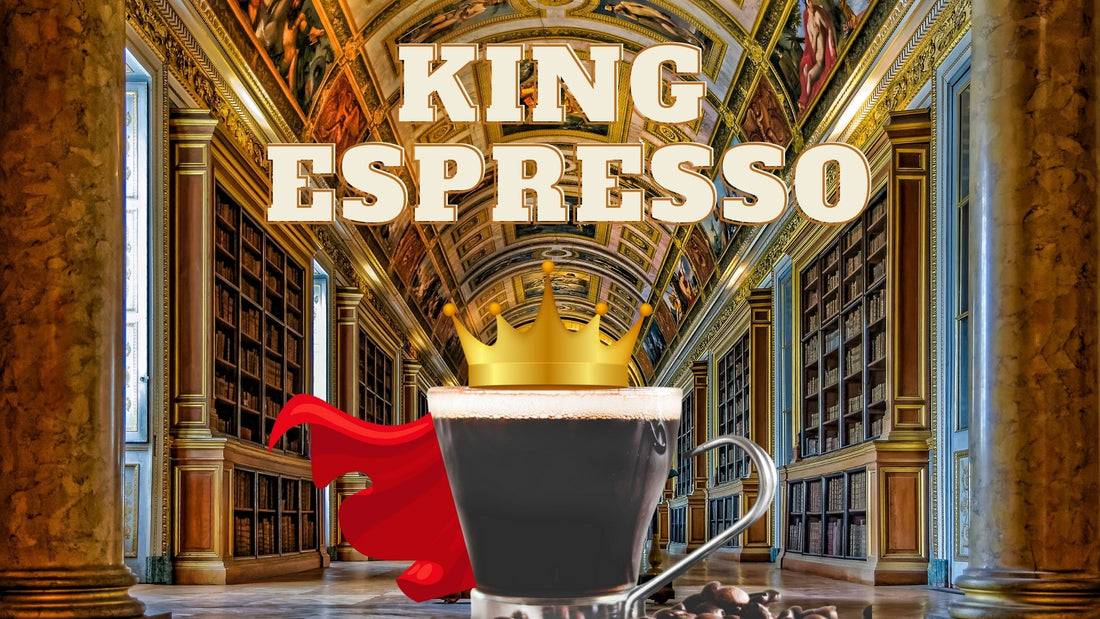Coffee is one of the only energy fuelled drink that comes in all shapes and sizes. Over many years, this delicious beverage is being played around with to create some of the most popular brews that we consume today. The Espresso is one, winning millions of hearts and while the brew is small in size, it packs plenty of punch as it usually contains pure crushed coffee.
In its simplest forms, an espresso is essentially a strong black coffee that is brewed under immense pressure.
There has been some deliberation as to where the espresso first come about. Coffee was already widely enjoyed by the Italians because the product made its way to the country during the Renaissance.
The invention of the machine and the method that led to espresso is usually attributed to Angelo Moriondo of Turin, Italy, who was granted a patent in 1884 for “new steamed machinery for the economic and the instantaneous confection of the coffee beverage”.
The machine consisted of a large boiler, heated to 1.5 bars of pressure that pushed water through a large bed of coffee grounds on demand, with a second boiler producing steam that would flash the bed of coffee and complete the brew. Though his machine was the first coffee machine to use both water and steam, it was purely a bulk brewer created for the Turin General Exposition. Today much is not known about Moriondo because of brand failure.
The espresso was invented in Venice, Italy in the early twentieth century. Luigi Bezzera was the creator of the drink and was indirectly improving the machine by Moriondo while he was experimenting with coffee to see how he could make it brew faster. In 1903, he was the owner of the manufacturing business, and it was frustrating for him that making a cup of coffee would take up so much time.
After plenty of research work experimentation it was discovered that adding steam pressure to the machine not only cut the time which it originally took to make the brew, but also a much stronger drink was created.
The new process drew out all the best qualities of the coffee beans and Bezzera quickly named the machine “Fast Coffee Machine”.
As the Italian word for fast in English is ‘espresso', the name of the brew originated from the first machine.
Unfortunately for Bezzera who was ahead of his time, his talents were not so successful. Soon after the invention, he met with DesideroPavoni in 1905, who purchased part of the machine’s rights from Bezzera, and then had it patented. Immediately, Pavoni became associated with espresso.
It is Pavoni in fact, that changed the way coffee is consumed today due to his marketing expertise.
Following Bezzera’s invention, both him and Pavoni worked together to improve the espresso machine. After working for two years, the created the “Ideale” which was released at the 1960 Milan fair. After the release, Pavoni took charge of the of the business venture and went solo. The machine was then named by the brand espresso and was advertised to be able to produce 1000 coffees per hour. The machine was successful, but it was far from perfect; therefore competitors saw an opportunity to improve it.
That is the deep history behind the creation of the Espresso that we presently drink. The drink is complex and highly punched based on the amount of pressured water that passed through the coffee bean.
Some of the basic components of an Espresso are...
- Most coffee beans that are used for making espresso are either Robusta or Arabica beans, for higher end brews with a more complex palette however, using of Arabica beans alone or Arabica beans with a blend of Robusta is preferred.
- Espresso beans are roasted longer and are darker than the beans which are used for drip coffee. So, no matter what the grind size, it is always recommended to use
- Espresso is roasted for a longer time usually past the second crack, so that it contains a deeper and toasted flavour. Because the beans are roasted for longer, it removes a lot of acidity while releasing more oils. This creates a heavier and fuller feeling in the mouth.
An espresso grind is much finer than other types of coffee grinds. This happens because the process of making espresso requires hot water being pushed through tightly packed grounds from a sharp ingrained filter. The coffee grounds are supposed to be very fine, exactly the size and texture of sand grains because the water comes into contact with them for a shorter period of time.
This strong and punchy coffee also requires a specific type of brewing process unlike regular cup of coffee. The mechanism needs either an espresso machine or aeropress, and it results in a short or two(1-2oz) of a concentrated espresso.
Only because espresso is roasted, ground and brewed differently, it has a unique flavour in comparison to drip coffee. It usually has a bolder, less acidic taste with a well rounded and full bodied finish. It tastes stronger, therefore has a rich coffee flavour. The roasting process especially brings out more oils in the beans, so it often has a heavier feel.
According to Italian coffeemaker Illy’s definition of the authentic espresso seems as good a measure as any:-
“A jet of hot water at 88°-93°C(190°-200°F)passes under a pressure of nine or more atmospheres through a seven gram(.25oz) cake-like layer of ground and tamped coffee. Done right, the result is a concentrate of not more than 30ml (one oz) of pure sensational pleasure.”
It means that nine atmospheres of pressure is equivalent to nine times the amount of pressure normally exerted by the earth’s atmosphere.
An espresso is all about consistency and precision and finding the perfect balance between grind, temperature and pressure. Espresso happens at the molecular level. This is why technology has been such an important part of the historical development of espresso and a key to the ongoing research for the perfect shot.
In 1938, the espresso that we enjoy in the present day was created. AchilleGaggia, an inventor, created the machine that could increase the steam pressure from 1.5-2 atmosphere to 8-10 atmospheres. The machine used a spring-piston lever to increase the pressure of the water in the boiler further. The process would work by the barista pulling down on the spring-piston lever as this would increase the force of water inside the cylinder. Then the machine would begin to pour the espresso without a burnt, bitter taste that was such an issue in previous models.
Following this incredible leap in the development of the espresso machine, Gaggia continued to build machines throughout WW2, which then led them to create a company. Thus, it resulted in the worldwide fame of the espresso and as we know it to be, today.

